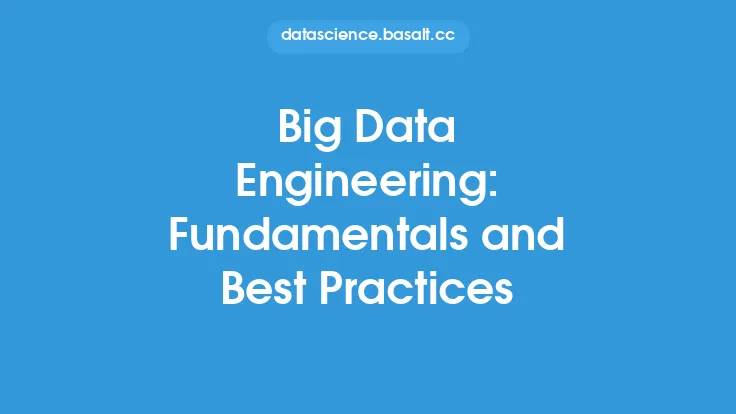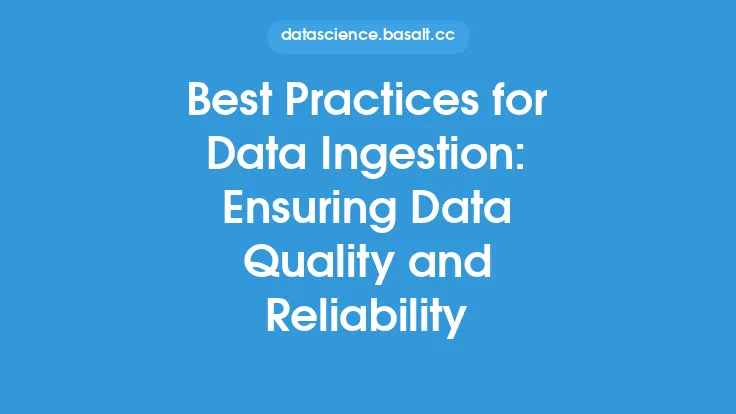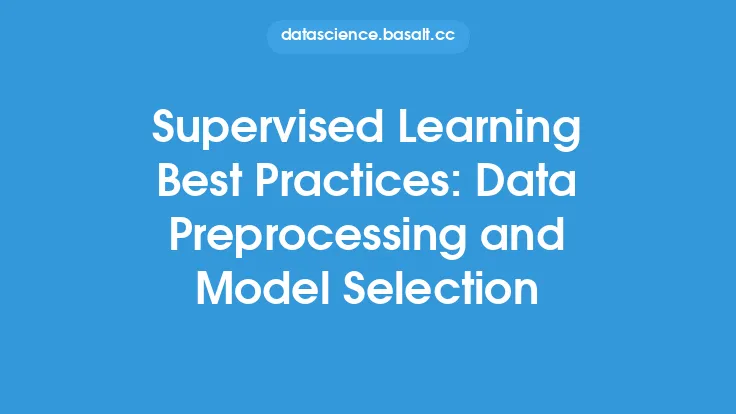Data feature engineering is a crucial step in the data mining process that involves selecting and transforming raw data into features that are more suitable for modeling. The goal of feature engineering is to create a set of features that are relevant, informative, and useful for the model to learn from, thereby improving its performance and accuracy. In this article, we will delve into the techniques and best practices of data feature engineering, exploring the various methods and strategies used to extract insights from data.
Introduction to Feature Engineering Techniques
Feature engineering techniques can be broadly categorized into two types: feature extraction and feature construction. Feature extraction involves selecting a subset of the most relevant features from the existing set of features, while feature construction involves creating new features from the existing ones. Some common feature extraction techniques include correlation analysis, mutual information, and recursive feature elimination. On the other hand, feature construction techniques include polynomial transformations, interaction terms, and feature encoding. These techniques are used to transform the data into a more suitable format for modeling, and to reduce the dimensionality of the data.
Handling Missing Values and Outliers
Handling missing values and outliers is a critical aspect of data feature engineering. Missing values can be handled using various techniques such as mean imputation, median imputation, and imputation using regression. Outliers, on the other hand, can be handled using techniques such as winsorization, trimming, and outlier detection using statistical methods. It is essential to handle missing values and outliers carefully, as they can significantly impact the performance of the model. In addition, it is also important to consider the type of data and the problem being solved when handling missing values and outliers.
Feature Scaling and Normalization
Feature scaling and normalization are essential steps in data feature engineering. Feature scaling involves transforming the data into a common scale, usually between 0 and 1, to prevent features with large ranges from dominating the model. Feature normalization, on the other hand, involves transforming the data to have a mean of 0 and a standard deviation of 1. This helps to improve the stability and performance of the model. Some common feature scaling and normalization techniques include min-max scaling, standardization, and logarithmic transformation.
Encoding Categorical Variables
Encoding categorical variables is a critical aspect of data feature engineering. Categorical variables can be encoded using various techniques such as one-hot encoding, label encoding, and binary encoding. One-hot encoding involves creating a new feature for each category, while label encoding involves assigning a numerical value to each category. Binary encoding, on the other hand, involves encoding the categorical variable into a binary format. The choice of encoding technique depends on the type of data and the problem being solved.
Feature Selection Methods
Feature selection is an essential step in data feature engineering. Feature selection involves selecting a subset of the most relevant features from the existing set of features. Some common feature selection methods include filter methods, wrapper methods, and embedded methods. Filter methods involve selecting features based on statistical measures such as correlation and mutual information. Wrapper methods, on the other hand, involve selecting features based on the performance of the model. Embedded methods involve selecting features as part of the model training process.
Dimensionality Reduction Techniques
Dimensionality reduction is a critical aspect of data feature engineering. Dimensionality reduction involves reducing the number of features in the data while retaining the most important information. Some common dimensionality reduction techniques include principal component analysis (PCA), singular value decomposition (SVD), and t-distributed Stochastic Neighbor Embedding (t-SNE). PCA involves reducing the dimensionality of the data by selecting the principal components, while SVD involves reducing the dimensionality of the data by selecting the singular values. t-SNE, on the other hand, involves reducing the dimensionality of the data by selecting the most important features.
Best Practices for Data Feature Engineering
There are several best practices for data feature engineering that can help improve the performance and accuracy of the model. Some of these best practices include exploring the data thoroughly, handling missing values and outliers carefully, and selecting the most relevant features. It is also essential to consider the type of data and the problem being solved when performing data feature engineering. Additionally, it is crucial to evaluate the performance of the model using various metrics such as accuracy, precision, and recall.
Common Challenges in Data Feature Engineering
There are several common challenges in data feature engineering that can impact the performance and accuracy of the model. Some of these challenges include handling high-dimensional data, dealing with noisy and missing data, and selecting the most relevant features. It is essential to address these challenges carefully and consider the type of data and the problem being solved when performing data feature engineering. Additionally, it is crucial to evaluate the performance of the model using various metrics and to refine the feature engineering process as needed.
Future Directions in Data Feature Engineering
Data feature engineering is a rapidly evolving field, and there are several future directions that are being explored. Some of these future directions include the use of deep learning techniques for feature engineering, the development of automated feature engineering methods, and the application of feature engineering to new domains such as text and image data. Additionally, there is a growing interest in the use of feature engineering for explainability and interpretability of machine learning models. As the field of data feature engineering continues to evolve, we can expect to see new and innovative techniques and methods being developed to improve the performance and accuracy of machine learning models.





